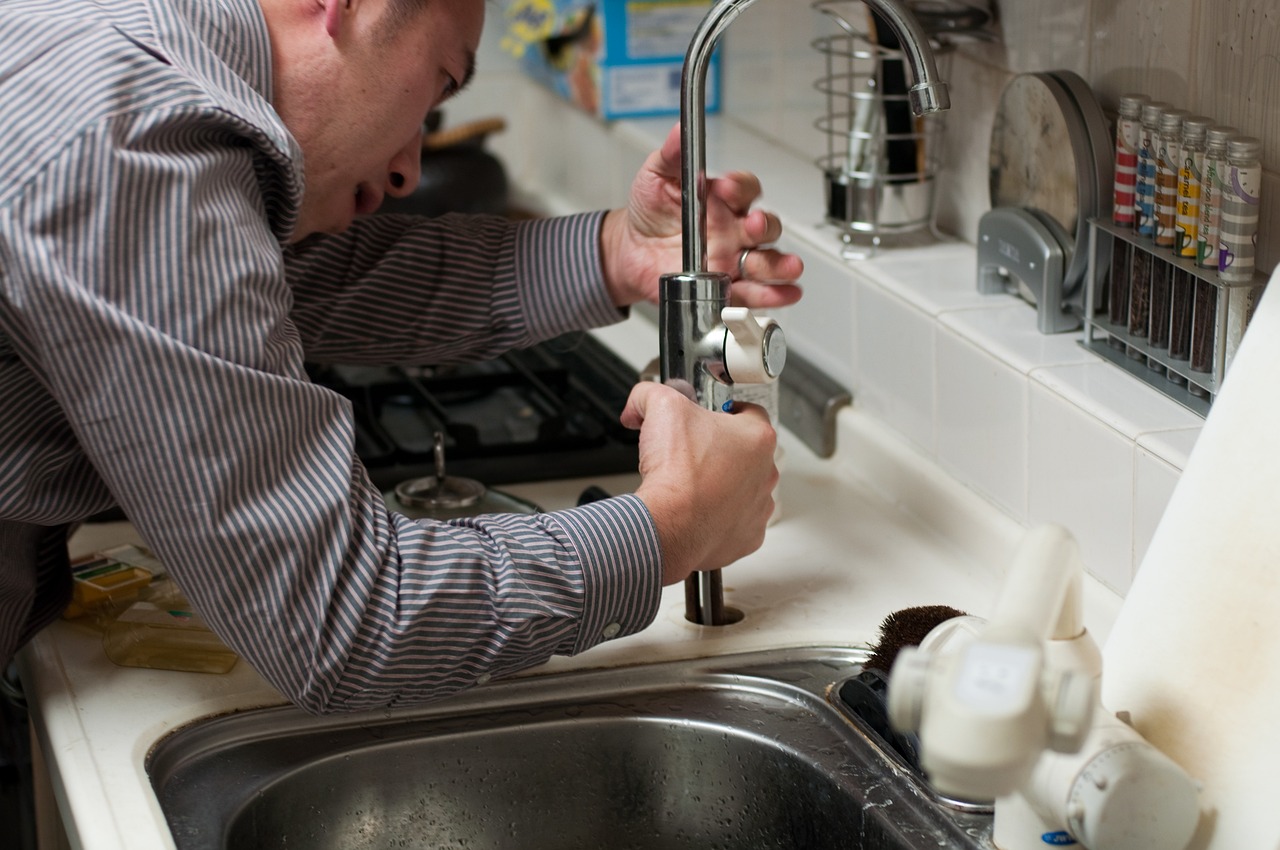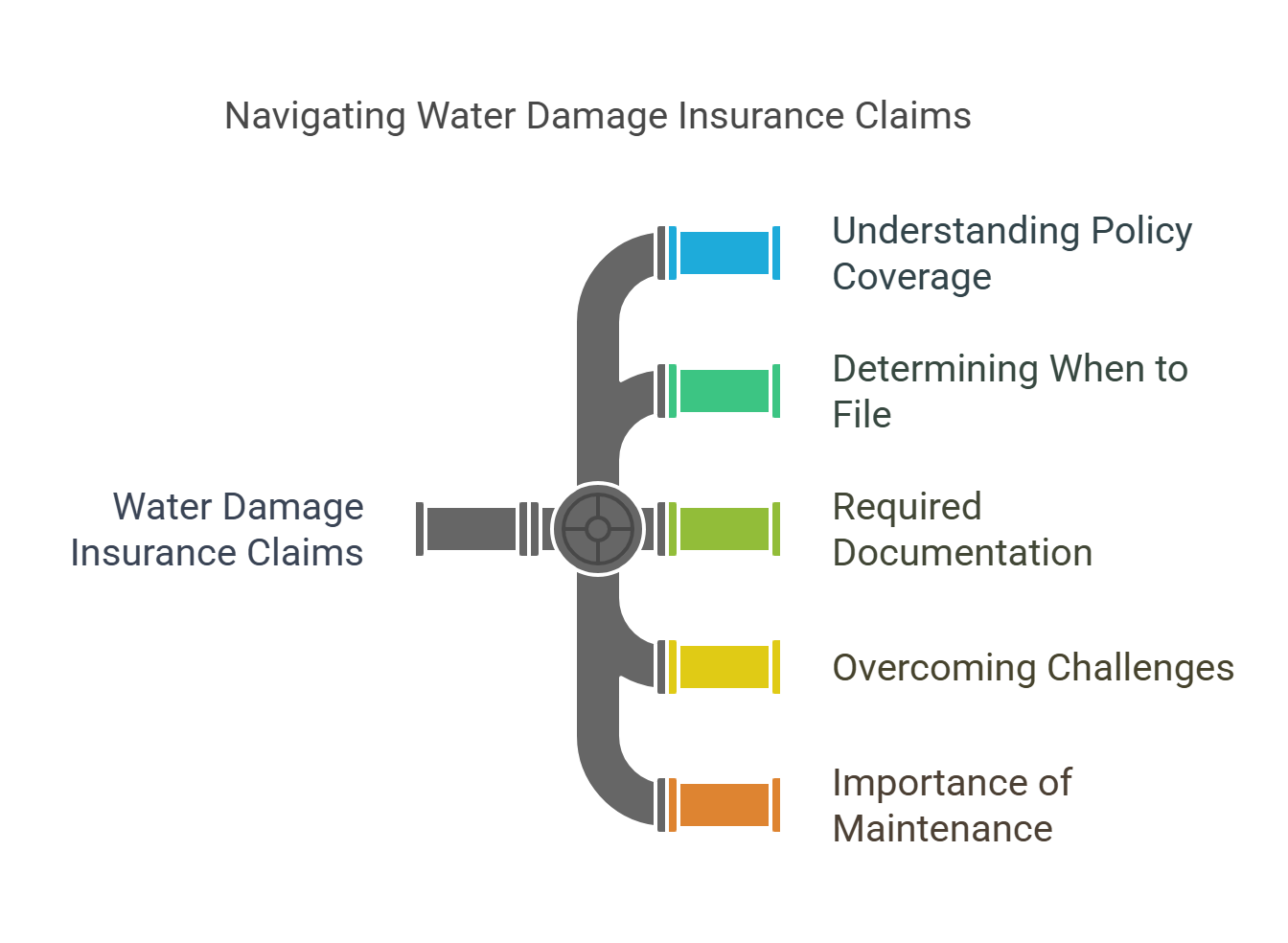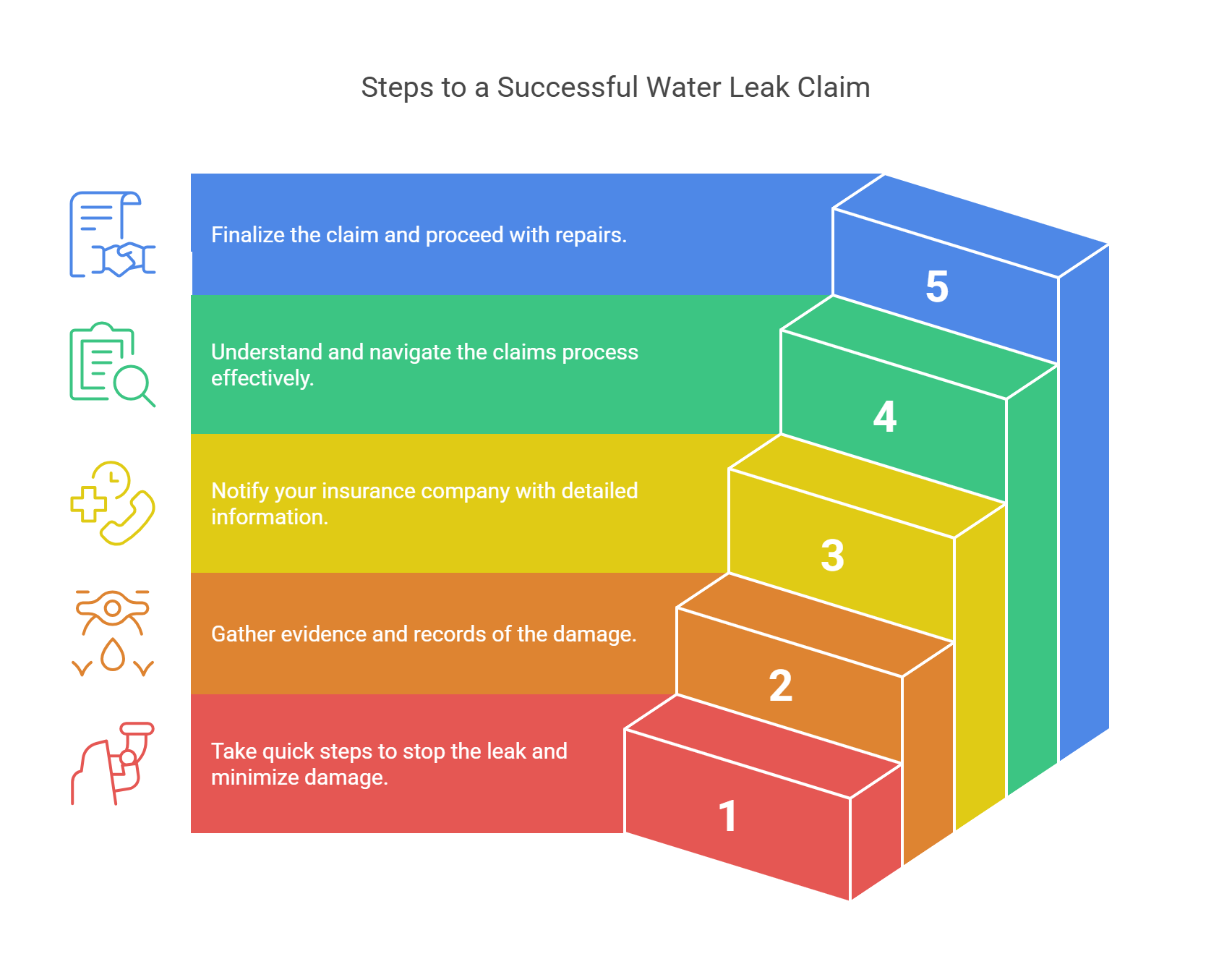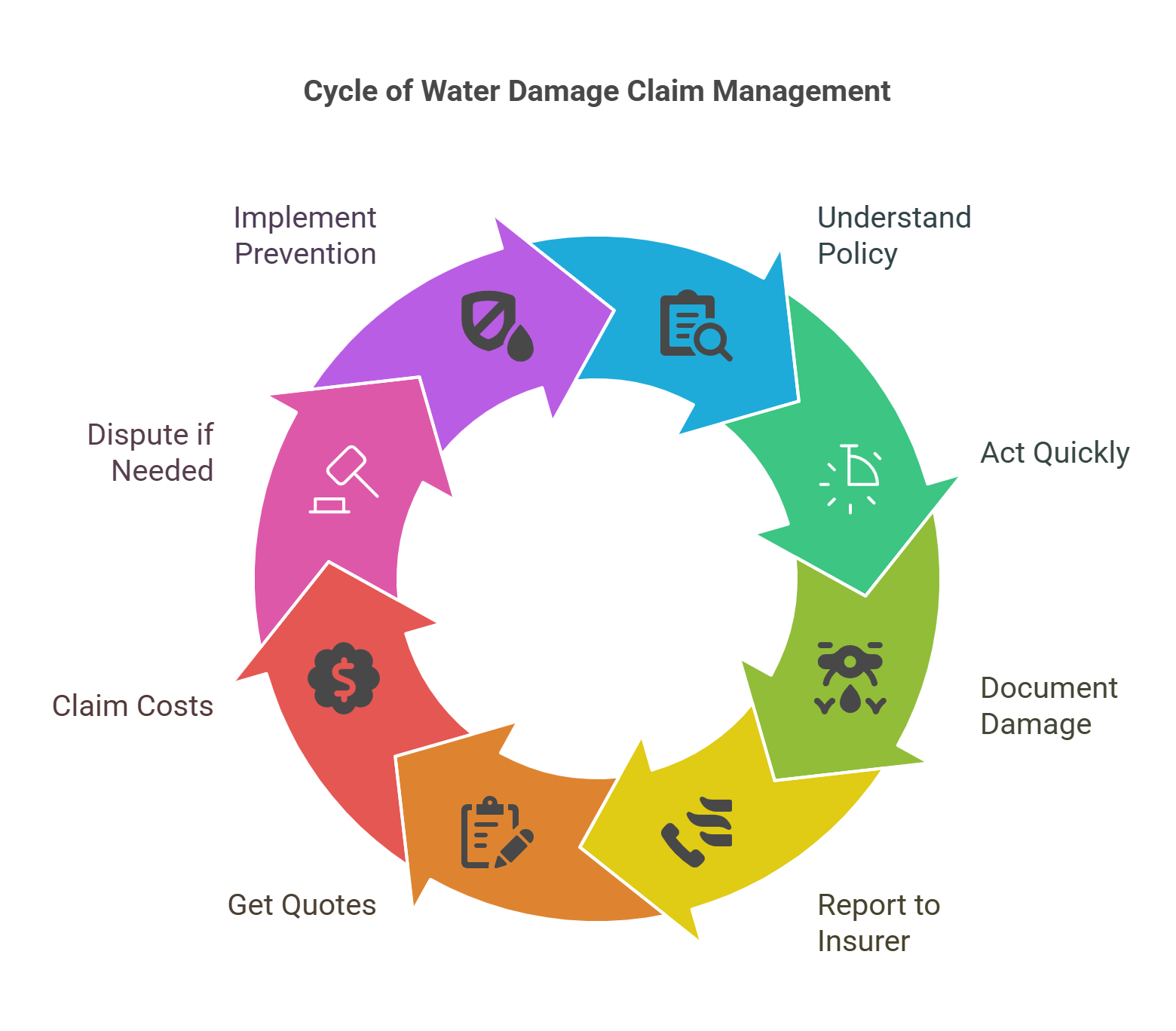


Panicking Over a Water Leak? Here’s How to Claim on Your Home Insurance the Right Way
Claiming home insurance for water leaks can be a regular occurrence at certain times of the year. A burst pipe, leaking radiator or faulty washing machine can quickly turn your home into a disaster zone. The shock. The mess. The expense. Water damage is not only one of the most common insurance claims in the UK – it’s also one of the most stressful.
But claiming on your home insurance for a water leak doesn’t have to be overwhelming. With the right knowledge and support from professional loss assessors like Oakleafe Claims, you can secure the settlement you’re entitled to without the stress.
In this article, we’ll walk you through how to claim for water damage, what your insurer really covers, and how a qualified loss assessor can increase your payout by up to 40%. Whether it’s a burst pipe, escape of water, or a leak from your neighbour’s flat, we’ll show you exactly what to do next.
It is often challenging for UK homeowners to file a water damage claim with insurance companies on their own. Homeowners must take immediate action to minimise damage and then handle the complexities of the claims process, but with the knowledge and experience of a professional claims management company like Oakleafe Claims, you can ensure timely and adequate compensation, mitigate the leak’s impact, and restore your home to its pre-damage state.
In 2023, ABI data shows that weather-related home insurance claims reached a record high of £573 million, with £286 million specifically from flooding after storms.
Water leaks can cause extensive damage to homes, making it necessary to file an insurance claim. This article offers water damage insurance claim tips on help you navigate the complexities of making an insurance claim after water damage, covering:
The key is to act quickly, document thoroughly, and be persistent when making a claim, potentially with the assistance of a professional claims management service. Following this advice can increase your chances of a successful water damage claim.
Your starting point is to review and understand your home insurance policy regarding water leak coverage. Typical insurance agreements cover ‘sudden and unforeseen’ water damage, such as that from burst pipes; however, they might exclude gradual damage, like a slow leak that has gone unnoticed or untreated over time. To avoid unpleasant surprises, familiarise yourself with the specifics of your policy’s coverage limits and common exclusions. It’s crucial to understand whether scenarios such as ‘escape of water‘ or ‘home flooding‘ apply to your circumstances.
In most cases, the simple answer is yes; most British insurers cover water leaks. However, the details are often tucked away in the fine print of your policy, making claiming water damage on insurance more complicated than it needs to be.
Home insurance typically includes ‘trace and access’ cover, which means the cost of finding and fixing the source of the leak is covered. However, the damage caused by the leak might be only covered by your contents insurance, so it’s crucial to understand the terms of your policy.
It’s important to note that insurers often require that you act quickly to minimise damage. This means as soon as you discover the leak, you should turn off the stopcock to halt the water supply and open your taps to drain the system to stop the leak.

What Oakleafe Clients Say:

The decision on filing home insurance claims for water damage largely depends on the extent of the damage and the terms of your insurance policy. For small leaks that only cause minor damage, paying out-of-pocket might be more cost-effective than risking a potential increase in future premiums.
However, for substantial water damage – for instance, water leaks from burst or frozen pipes in winter that cause water damage to carpets and other fixtures and fittings or a business insurance claim for a restaurant or office block – the cost of repairs can be significant, and filing an insurance claim for water damage can provide much-needed financial relief.
Taking prompt and decisive action when claiming home insurance for water leak can streamline the insurance claim process. Start by pinpointing the source of the leak and halt further damage where possible. Then, contact your insurance provider without delay. The initial report sets the stage for your claim, and providing accurate details is imperative.
Filing a claim should be a calculated decision. Weigh the cost of the deductible against the extent of the damage. Consider potential premium increases and the impact of a claim on your no-claims bonus. It may be economically more sensible to manage repairs out-of-pocket for minor incidents.
Solid documentation is the backbone of a successful insurance claim. Capture photographic evidence of the damage and retain all correspondence with contractors and your insurer. Secure detailed repair quotes, as these documents are critical for your claim. This is one of the most vital homeowners’ water damage insurance claim tips, so please document everything around your claim.
1. Immediate Actions Upon Discovering a Water Leak
The moments after discovering a water leak are crucial. Here’s what you should do immediately:
These actions are not just about protecting your property; they form the foundation of a strong insurance claim by demonstrating due diligence in minimising damage.
2. Documentation and Evidence Collection
Solid evidence is key to a successful insurance claim. Take detailed photographs of the damaged areas and any affected belongings. Keep a record of all communication with tradespeople and any costs incurred for emergency repairs. This documentation will support your claim, providing clear evidence of the extent of the damage.
3. Contacting Your Insurance Company
Notify your insurance provider about the damage as soon as possible. You will need to provide:
Expect questions regarding the nature of the leak and any preventative measures previously in place. Be prepared with information to streamline this initial interaction.
“Escape of Water” is a term commonly used in insurance policies to describe water that has leaked from plumbing or heating systems. Knowing the extent of your coverage, including any limitations or exclusions, is pivotal. It sets realistic expectations for the claim outcome and enables you to contest any discrepancies with knowledge.
4. Managing the Claims Process
Navigating the claims process involves:
Maintaining open and honest communication with your insurance company and any appointed professionals throughout this process can significantly influence its smoothness and speed.
5. Resolving Claims and Repair Work
Once your claim is approved, the focus shifts to repairing your home. Depending on your policy, you might have the freedom to choose your contractors or may need to use those approved by your insurer. If the process stalls or disputes arise, remain calm and seek mediation or advice on escalating your concerns within the insurance company.
The responsibility for covering the cost of water leak damage usually falls to the owner of the property where the leak originated. If the leak came from your property, your home insurance should cover the cost, subject to the terms and conditions of your policy.
If the leak originated from a neighbour’s property, they must report a water leak or leaking pipes. Their insurance should ideally cover the cost of damage to your home. However, if they’re uninsured or unwilling to make a claim, you might have to claim on your own insurance and let your insurer reclaim the cost from the neighbour or their insurer.
It is important to discuss the situation calmly and professionally with your neighbour, remembering that water leaks are often unexpected and unintentional.


Even with meticulous documentation, challenges may arise. Delays in reporting could weaken your claim, and disputes over policy coverage can result in contentious negotiations. Understand that you can dispute and appeal the decision in underpaid or denied claims. The ability to articulate your position with evidence-based clarity is paramount.
Prevention
Possibly the biggest homeowners water damage insurance claim tip we could give you is:
an ounce of prevention is worth a pound of cure.
Regular maintenance, such as periodic plumbing inspections, can significantly reduce the risk of water leaks. Employ early detection tools like water sensors to catch potential issues before they escalate. Proactive improvement measures also demonstrate a commitment to properly care for your insurer – a factor that could be advantageous during a claim.
Here are 10 more tips to help you make a successful damage insurance claim:

How to Make a Water Damage Insurance Claim – Water leaks can be stressful and cause extensive damage to your property. However, with the right information and by taking swift action, you can navigate through the process of making a successful house insurance claim for water damage.
The water damage insurance claim process can be complex and requires a thorough understanding of formal procedures and detailed evidence. It’s vital to understand your insurance policy fully and feel free to seek advice from an insurance agent or loss assessor if you need clarification on anything. Being well-informed can make all the difference in the face of a water leak.
Hiring an Insurance Claims Management professional is recommended to ensure your claim is presented correctly and efficiently. At Oakleafe our staff are fully accredited and highly trained, ensuring we provide the best possible service. We have vast expertise and experience in both domestic and commercial flood insurance claims with thousands of satisfied policyholders who have received their deserved insurance settlement. With no upfront fees required, our internal data shows that insurance claims managed by professional loss assessors like Oakleafe can expect a settlement up to 40% higher than claims managed by the policyholder.
In conclusion, preventing water leaks through regular maintenance and taking necessary precautions is crucial for safeguarding your home. Understanding your insurance coverage and following the correct procedures when making a claim can help cover the costs associated with water damage. By implementing preventive measures and being prepared, you can minimise the risks and potential impact of water damage on your property.
Water leaks can wreak havoc on your home – and your finances. But with the right actions, expert advice, and a solid understanding of your insurance policy, you can turn a stressful situation into a successful claim.
Here’s what to remember:
📸 Document everything – damage, repairs, communication.
At Oakleafe Claims, our experienced loss assessors handle the entire process on your behalf. From compiling evidence to negotiating with your insurer – we’re on your side. And the best part? There’s no upfront fee, and most clients see significantly higher settlements.
Book your FREE consultation now with an Oakleafe loss assessor and find out how much more you could claim.
👉 Book Now Using the ‘Book Appointment’ button.
📱 Or call us direct on our 24 hour line – 0333 2101 99
What Oakleafe Clients Say:


Claiming home insurance for water leak – when you discover a water leak causing damage, immediately shut off the water supply to prevent further damage. Then, contact your insurance provider immediately to report the leak and damage. Your insurer may send an adjuster to assess the damage or ask you to get repair quotes. You’ll need to provide evidence, like photos/videos documenting the extent of the damage. If your claim is approved per your policy’s coverage, your insurer will pay out for the covered repair costs minus your deductible amount.
It depends on the extent of the damage and the terms of your insurance policy. For minor leaks that cause little damage, it may be more cost-effective to pay out-of-pocket rather than claiming home insurance for water leak, which could increase your future premiums. However, the repair costs can be significant for substantial water damage from burst pipes or major leaks. In those cases, filing an insurance claim can provide much-needed financial relief, as that’s what your policy is intended to cover. Weigh the repair costs against your deductible and potential premium increases when deciding if a claim makes financial sense.
Most British home insurance policies cover “sudden and accidental” water damage incidents, such as leaks from burst pipes or faulty appliances. However, policies typically exclude gradual leaks that have gone unnoticed or untreated over time. Home insurance usually includes “trace and access” coverage, which covers the cost of locating and repairing the source of the leak.
However, the actual damage caused by the leak may only be covered under your contents insurance policy. So, in summary – you can file a water damage claim with most standard home insurance policies in the UK, as long as the damage was caused by a sudden, accidental leak and not a gradual one. But you need to understand what is and isn’t covered under your specific policy related to leak source repairs versus damage repairs.
Remember, it’s important to understand your policy thoroughly. If you have ‘home emergency’ cover, your insurer might also cover the cost of emergency repairs. The key is to act fast, document thoroughly, and carefully follow your insurer’s claim process for the best chance at a successful payout.

Please complete the form and one of our insurance claim professionals will call you back ASAP